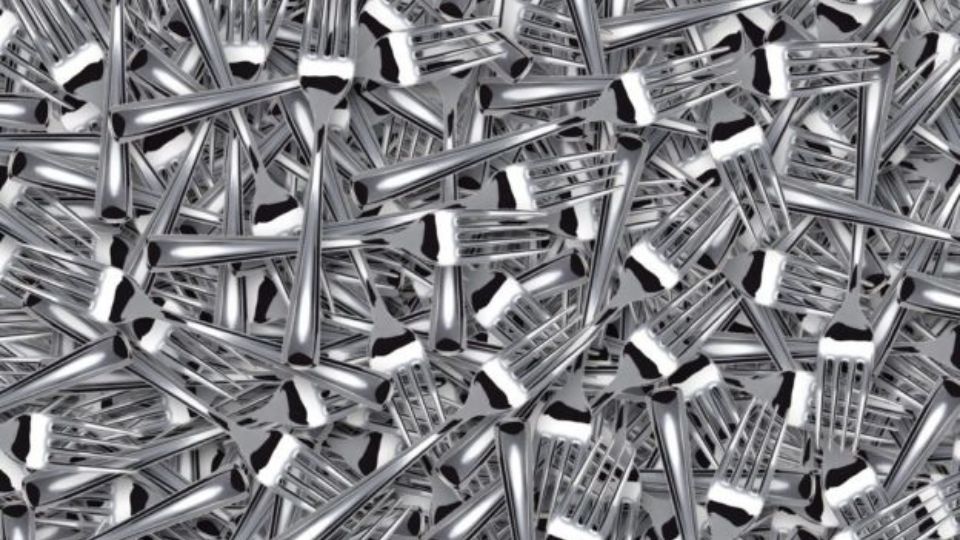Background and History
In 1938, the Federal Food, Drug, and Cosmetic Act (FFDCA) granted FDA authorization for the regulation of cosmetic products and ingredients.
The statutory provisions of the FFDCA addressing cosmetics include adulteration and misbranding. In addition to the FFDCA, cosmetics are also regulated under the Fair Packaging and Labeling Act (FPLA) and related regulations.
The cosmetics provisions were amended by the Color Additive Amendments Act of 1960 and the Poison Prevention Packaging Act of 1970, but remain basically the same as the provisions in the 1938 FFDCA. Cosmetics products are not subject to the same regulatory hurdles, complexity, time, registration requirements, or approval conditions as drug products.
In general, Manufacturers of cosmetic products, and of OTC cosmetics in particular, will need to upgrade their manufacturing facility, quality assurance and documentation systems and machinery, and to adopt good manufacturing (GMP), documentation (GDP), storage (GSP) and engineering (GEP) practices as well as perform validations.
Cosmetics manufacturers may register their establishments or list their product formulations in the FDA Voluntary Cosmetics Registration Program (VCRP) but it is not required.
However, if a product meets the FDA definition of both a cosmetic and a drug (i.e., is a drug-cosmetic combination), then the product must be registered and is subject to drug laws and regulations. Companies and individuals who manufacture or market cosmetics have a legal responsibility to ensure the safety of their products.
The FFDCA restricts adulterated, misbranded, or mislabeled cosmetic products and strongly recommends cosmetics manufacturers follow GMP (Good Manufacturing Practice), conduct self (internal) and/or external inspections and audits, in addition to establishing an effective quality system, to minimize this kind of risks and to assure that the cosmetic products consistently meet quality standards and perform their stated intended use.
Cosmetic vs Drug
Cosmetic Product Definition
The FFDCA defines cosmetics as “articles intended to be rubbed, poured, sprinkled, or sprayed on, introduced into, or otherwise applied to the human body…for cleansing, beautifying, promoting attractiveness, or altering the appearance.”
Cosmetic products include skin moisturizers, perfumes, lipsticks, fingernail polishes, eye and facial makeup preparations, cleansing shampoos, permanent waves, hair colors, deodorants, as well as any substance intended for use as a component of a cosmetic product.
Drug Product Definition
The FFDCA defines a drug as a product intended for use in the diagnosis, cure, mitigation, treatment, or prevention of disease and products that affect the structure or any function of the body of man or other animals.
Pharmaceutical/Drug, Cosmetic, and OTC Product Combinations
Cosmetic products and ingredients, with the exception of color additives or active pharmaceutical ingredients (API), do not require FDA submission or approval. However, there are products that contain both cosmetic and drug ingredients and, as such, meet both definitions. Some products have multiple effects (both cosmetic and pharmacologic).
For example, an anti-dandruff shampoo meets the definition of both a cosmetic and drug product because it is used to clean the hair as well as to treat dandruff. Additional examples of cosmetic-drug products are anti-aging facial creams, fluoride toothpaste, antiperspirant deodorants, and Sun Protection Factors (SPF) moisturizers and makeup.
Products that are combinations of a cosmetic-drug(and/or OTC) product require FDA premarket approval via the New Drug Application (NDA) mechanism for drugs or conform to a monograph (a regulatory standard for ingredients) as specified by the FDA OTC (over the counter) Review process. Monographs define methods of analysis for OTC drug ingredients which are to be identified to assure that OTC products are safe, effective, and not misbranded.
Cosmetic and Drug Intended Use/Indication
Product indication is determined based on product label claims, consumer perception of the product based on the product and/or brand reputation, and any APIs (active pharmaceutical ingredients) which have a therapeutic effect.
Cosmetic Product Regulation and Registration
Cosmetic products do not require FDA approval before marketing unless they contain color additives or any restricted or hazardous ingredients. Drugs, however, do require registration in the US, including NDA (New Drug Application) submission to FDA.
Any OTC medicine that conforms to a published US monograph may be manufactured and sold without an individual product license and will be generally recognized as safe and effective, and not misbranded. Monographs are rules grouped on the basis of class types (for example, fluoride dentifrices, cough suppressants, and antihistamines).
OTC drugs must meet the requirements of the appropriate class once that rule is published as a final regulation. If an OTC drug does not meet the requirements of the appropriate final rule, it is considered a misbranded drug and a “new drug.” A “new drug” must have an approved New Drug Application (NDA) before it may be marketed, and drug manufacturers must comply with GMP regulations.
Cosmetic-drug combination products are subject to both cosmetic and drug regulations and should comply with OTC and their respective labeling requirements. The determination of whether a cosmetic is also a drug, and therefore subject to the additional requirements that apply to drugs, is based on the distributor’s intent or the intended use.
The intended use of a product may be established in several ways, such as claims on product labeling, in advertising/promotional materials, or through the inclusion of ingredients that will cause the product to be considered a drug because of a known therapeutic use.
FDA has published several OTC category monographs of nonprescription drug treatments such as acne, dandruff, seborrheic dermatitis, psoriasis medications, and sunscreens.
Cosmetic product formulation registration is not mandatory, but for OTC cosmetic products manufacturers are obligated to register their drug products with FDA, that is, the active drug ingredients that are in the cosmetic product.
Cosmetic product manufacturers are solely responsible for both the ingredients and the finished cosmetic product safety before marketing. Cosmetic ingredient safety can be tested on several animal models to monitor irritation (skin, eye), allergenicity, and toxicity following ingredient exposure to prove that the cosmetic product is safe for use.
In the past decade, cosmetic product safety testing on animal models is less common due to animal rights advocacy which has affected public opinion. As a result, FDA offers alternative safety tests and scientific models to minimize the use of animals.
The Cosmetic Ingredient Review (CIR) program is an expert panel that reviews the most common cosmetic ingredients used in the cosmetic industry in order to determine if:
- the ingredient is safe for use in the relevant ingredient concentration.
- the ingredient is safe, but with qualifications, and therefore can be used under specific conditions.
- the ingredient is not safe and therefore should not be used in cosmetic product formulations.
- the ingredient has insufficient data or information for a clear determination.
CIR review reports are published. Cosmetic manufacturers are encouraged to follow their recommendations but are not obligated to do so.
Color Additives
Cosmetic product color additives include any dye, pigment, or substance that may impart color to the human body.
The FFDCA requires color additives to adhere to certain requirements for approval prior to marketing, certification, identity, specifications, and use and restrictions, depending on the nature and type of additive. Colors subject to certification are derived primarily from petroleum and are sometimes known as “coal-tar dyes” or “synthetic-organic” colors.
Mineral plant or animal-sourced color additives do not require FDA certification. Cosmetic products will be considered adulterated if they contain uncertified color additives or contain a certified color additive that does not comply with applicable FDA regulations.
Voluntary Cosmetic Registration Program
The FDA VCRP (Voluntary Cosmetic Registration Program) encourages US domestic cosmetic manufacturers and packagers to register their facilities (establishments) 30 days before going into operation.
Moreover, foreign cosmetic product manufacturer and packagers (outside the US) interested in exporting their products to the US should register their facilities and product formulation ingredients.
Cosmetic Drug Product Adulteration, Misbranding and Mislabeling
Cosmetic-Drug Product Adulteration
A combined cosmetic-drug product will be defined as adulterated in the following circumstances:
- Product contains poisonous or deleterious substances which may cause consumer injury under the conditions of use detailed on the product label
- Product contains filthy, contaminated, putrid, or decomposed substances
- The product was manufactured, packaged, stored, or distributed under insanitary and/or non-controlled conditions that may result in product contamination, low quality, and/or consumer risk
- Product containers composed of poisonous or deleterious materials may render product contents a risk to patient health
- Product contains unsafe color additives (except for hair dyes)
To decrease adulteration risks, FDA established a list of poisonous or deleterious substances which can cause cosmetic products to be considered adulterated.
Cosmetic Drug Product Misbranding and Mislabeling
The FFDCA prohibits adulteration or misbranding of cosmetic products, including introduction, receipt, and delivery of adulterated or misbranded cosmetics in interstate commerce. In cases where adulterated or misbranded cosmetic product is introduced or held for sale, FDA may take enforcement actions.
The Ffdca Defines “Misbranded” Products As Those Which:
- have a false or misleading label
- have partial information on the label
- the information on the label is not prominently placed and/or conspicuous and as a result, may mislead the consumer
- the container design or form may mislead consumer usage
- color additives are used but the required information on packaging and labeling does not conform to regulatory requirements
- the packaging or labeling violates or does not conform to regulations for poison prevention
Cosmetic Product Adverse Events
Consumers can report negative reactions and adverse events as a result of cosmetic product use via the FDA MedWatch website. FDA analyzes and uses adverse events reports to identify repeated adverse events, consumer complaints, and low-quality cosmetic products, and may legal action if needed.
Good Manufacturing Practices (GMP) and GxPs
General
In the past decade, GMP was adopted by the cosmetic industry to maximize assurance that cosmetics are consistently manufactured at the required quality appropriate for their intended use. To achieve the required product quality, both manufacturing and quality control aspects and best practices should be followed.
ISO 22716:2007 established initial, basic good manufacturing practice (GMP) guidelines. Since then, the FDA published draft guidance for cosmetic GMP, which includes updates to and clarifications of the ISO standard, and data from the ICCR (International Cooperation Of Cosmetic Regulations) group.
The Main Concerns of the Ffdca Include the:
- Product adulteration with substances that may risk consumer health
- Products that contain contaminated, filthy, putrid, or decomposed substances
- Low-quality products that may harm the consumer
Documentation and Records
Standard operating procedures (SOPs) and work instructions, batch records, policies, protocols, risk assessments, and other controlled documents should be written and include all internal procedures, methodologies, and instructions in a controlled and effective manner.
Tasks and day-to-day activities subject to controls should be described, documented, and approved by all relevant functions, training should be given to relevant employees (and documented), and records managed and retained in a controlled manner in order to assure that:
- all different processes follow quality and GxP principles.
- all products manufactured will be tested and meet the required quality aspects.
- human error as a result of lack of information and misinterpretation is prevented.
- traceability is improved by using good documentation practice
- deviation investigations and root cause analyses are improved.
- critical process parameters are controlled and monitored.
- utilities and process equipment are validated.
Documents will include all current, relevant information and should be retained in either electronic or paper format. Batch records should be detailed enough and include all information related to raw material identity and quantities, production steps, process and environmental parameters, process yield, limits, sampling, in-process controls, storage, and batch status.
Controlled documents should be reviewed and approved, and training periodically given by relevant company personnel, to verify that the information in the document is up to date and reflects the actual procedures being performed.
Internal Quality Audits and Supplier Audits
In addition to supplier GMP and quality audits, the cosmetic manufacturer/company should periodically perform internal GMP and quality audits and inspections. These audits/inspections should be performed either by objective personnel inside the company (not from the same audited or related department) or by external auditors/inspectors. It is always recommended to use external auditors, as they usually have a more objective point of view.
The main objective of the internal quality/GMP audits/inspections is to ensure that the cosmetic company follows and implements all quality and GMP requirements detailed in this article, to assess the compliance of the company, and, most importantly, to identify gaps to be closed with appropriate corrective and mitigation actions.
Internal audit observations and a summary report should be presented to company senior management, and corrective action implementation should be documented, executed, tracked (usually via a CAPA mechanism), and reported to senior management as part of a management review.
The company should periodically audit its suppliers to ensure that the purchased and supplied raw materials, printed materials, packaging materials, equipment, and/or other components meet the quality and standards required by the company and that these materials/components are manufactured and supplied according to GMP principles and standards.
Building and Facilities
Cosmetic, drug, and OTC products should be manufactured in a facility that complies with the current GMP. The facility should be designed according to GMP standards, including proper construction materials and facility design.
Material and personnel flow, sufficient space for manufacturing and maintenance, as well as proper segregation of materials and products, should be included in the facility design in order to minimize the risk of mix-ups, contamination, and cross-contamination.
A GMP facility will have pest control that should be monitored routinely according to a detailed procedure. Raw materials, intermediate and final products should be exposed only in clean rooms and/or controlled areas. Inlet air should be filtered to the required cleanliness level and supplied at the required temperature and relative humidity.
Walls, ceilings, floors, windows, doors, and other construction materials should be the pharmaceutical grade where required, smooth, easy to clean, resistant to cleaning agents, and will not shed particles. Process and storage environmental conditions such as temperature, relative humidity, and other relevant working conditions should be controlled, monitored, and validated.
Gowning policy, as well as cleaning and maintenance procedures for machinery, systems, and equipment, should be documented in (written) and followed to maintain the cleanliness and operational state of the facility for sanitary operations.
Proper fixtures, ducts, pipes, drainage, air breaks, and backflow prevention mechanisms should be installed to prevent product contamination.
Equipment
Equipment used for OTC and combined cosmetic-drug products should be designed for its intended use, including sanitary design, and should be constructed from pharmaceutical grade materials such as stainless steel, glass, etc., for prevention of corrosion and dirt accumulation and improved ability to clean, and for minimizing the risk of contamination, cross-contamination or process problems.
Equipment should be qualified and validated prior to use. All critical parameters should be identified, measured, and monitored using calibrated instrumentation, displayed, and controlled throughout the entire cosmetic/OTC/drug product manufacturing process.
Equipment and utensils should be maintained (preventive maintenance) and kept in a clean and orderly condition. Equipment should be stored in clean and controlled areas and kept sealed as much as possible to maintain cleanliness and to prevent contamination, microbial proliferation, and corrosion.
Equipment instrumentation that measures, controls, and monitors critical process parameters should have the required accuracy level and be in a calibrated state. Equipment and utensils that are not in a validated state and/or are defective or do not meet the required tolerances should not be used for production purposes.
Raw Materials
Raw materials should be purchased from certified suppliers that have official GMP compliance certification. Supplier GMP and quality system audits/inspections should be performed at least once every two years.
Raw materials should be supplied with an official and signed COA (Certificate of Analysis) or Certificate of Compliance (COC). All raw material release specifications should be tested by the company quality control and verified to meet the release specifications.
Raw materials should be stored and transported in a controlled manner according to the specified storage conditions such as temperature, relative humidity, and light exposure, as detailed in the manufacturer material label.
Raw material packaging should not be defective and should be labeled to clearly identify the stored raw material name, lot number, expiry date, and status (rejected/released/quarantined). Received raw material should be transferred immediately to its intended controlled storage areas, and exposure to sunlight/rain or other non-controlled conditions is forbidden.
Received raw materials should be identified and tested to ensure they meet the declared supplier specifications. Raw materials should be stored in such a way that will prevent mix-ups, contamination from the environment, and cross-contamination from other raw materials. Raw material packages should be sealed, placed on racks or trays, and should have no contact with the floor.
Ingredients
Color additives should be approved for cosmetic usage according to 21 CFR Parts 73, 74, and 82. Prohibited cosmetic ingredients such as bithional, vinyl chloride, chloroform, and others should not be used in product formulations.
Cosmetic-OTC Product Labeling
A cosmetic product must be labeled according to cosmetic labeling regulatory requirements (detailed in the cosmetic labeling manual). OTC products must be labeled according to OTC drug regulations, including “Drug Facts” labeling as described in the CFR.
Combinations of OTC drug and cosmetic products must meet OTC drug and cosmetic labeling requirements, which include a list of active and inactive ingredients.
OTC drug monographs include information to be labeled on the product package to assure that the product will not be misbranded. The label will contain a Drug Facts panel with a list of active ingredients, drug purpose(s), use(s) and applicable warnings, directions, inactive ingredients, consumer service telephone number(s), and other relevant information.
First, “Active Ingredients” should be listed alphabetically, followed by a list of the cosmetic ingredients, or listed in descending order of predominance as “Inactive Ingredients”, or divided into groups such as concentrations of greater than one percent of color additives.
In addition to the FFDCA, cosmetics products are regulated under FPLA (Fair Packaging and Labeling Act) which focuses on packaging and labeling of “consumer commodities” that include cosmetic products manufactured or distributed for sale through retail sales agencies or individuals.
If a restricted ingredient was added to the Cosmetic product, a warning statement should be printed on the product label.
Cosmetic and Drug Manufacturer FDA Audits and Inspections
As with the pharmaceutical industry, FDA can audit/inspect cosmetic drug manufacturers without any prior notice. The main focus of FDA audits is on product safety, adulteration, and misbranding violations. As part of an inspection, FDA may sample a product for analysis at the manufacturing, storage, transportation, and import stages.
In cases where there is a history of consumer complaints, adverse effects, and/or product recalls, FDA will follow up on adverse events and complaints related to a specific product. In addition to the FDA, US distributors may require Qualified Person approval before a product may be marketed.
Qualification and Validation
Validation and qualification are required for a variety of cosmetic product equipment and processes, such as utilities, manufacturing and testing equipment, cleaning processes, manufacturing processes, analytical methods, software, computerized systems, storage, and shipping.
Utility validation – Critical utilities will be validated for installation and operational qualification (IQ/OQ). Noncritical utilities with no impact on product quality and/or GMP can have commissioning qualifications only.
Process equipment validation – Process equipment such as vessels, tanks, homogenizers, pumps, filling, and packaging machines will be validated for installation, operational and performance qualification (IQ/OQ /PQ) under worst-case conditions.
Process equipment cleaning Validation – Equipment that comes into contact with the product, such as tanks, vessels, homogenizers, filling machines, and others will be subject to cleaning validation and clean hold storage time studies under worst-case conditions.
Analytical equipment and systems validation – Will be validated for installation and operational Qualification (IQ/OQ), and undergo software and computerized systems validation (CSV).
Analytical methods validation – Analytical methods used for testing active raw materials, product detection, monographs, impurities, cleaning agents, and microorganisms will be validated.
CIP (clean in place) skids validation – CIP skids will be validated for installation, operational, and performance qualification (IQ/OQ/PQ) including qualification of spray devices installed on the equipment.
Control panel and HMI validation – Equipment and skids control panels and human-machine interfaces (HMIs) will undergo software and computerized systems validation (CSV) according to EU Annex 11, FDA 21 CFR Part 11, and GAMP 5 requirements. For more information, refer to the article on FDA/CE-compliant computerized and software validation.
Shipment Validation – Final product shipment and supply chain should be validated for installation, operational and performance qualification (IQ/OQ/PQ) for transport systems and transportation routes. For more information, refer to the article on Good storage and distribution practices, cold chain safety, and validation.







